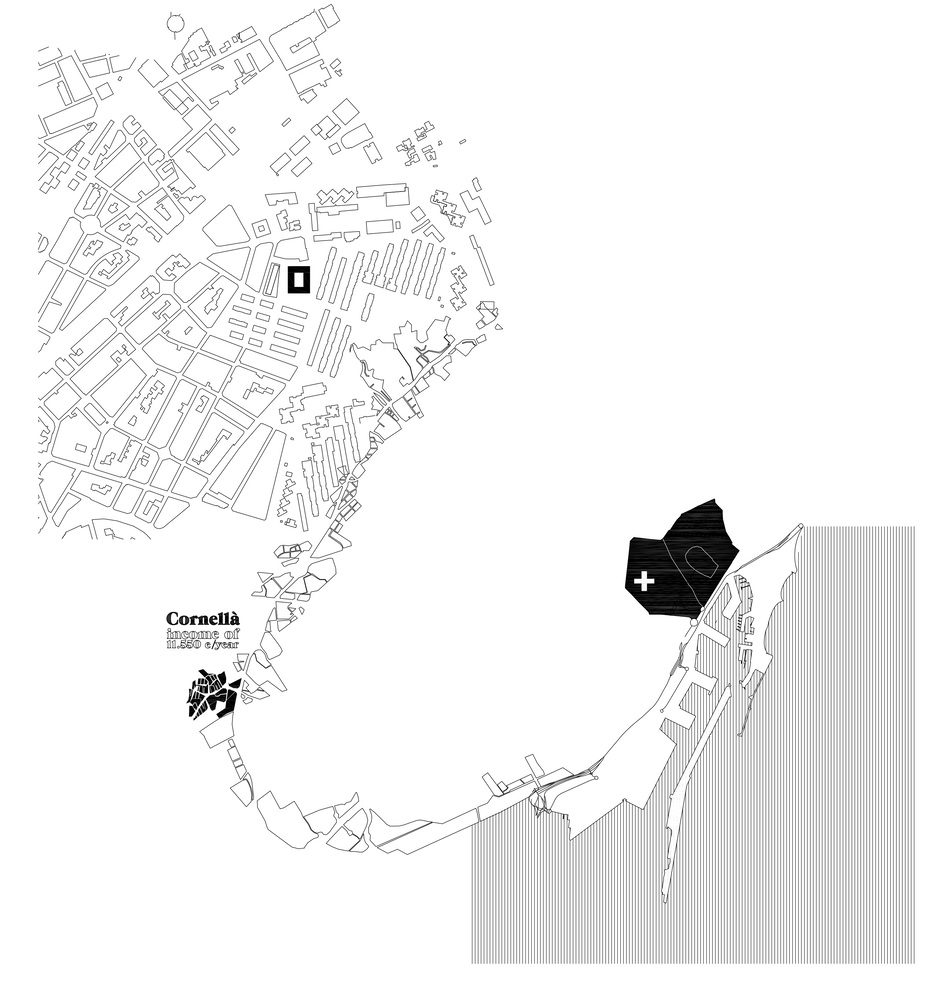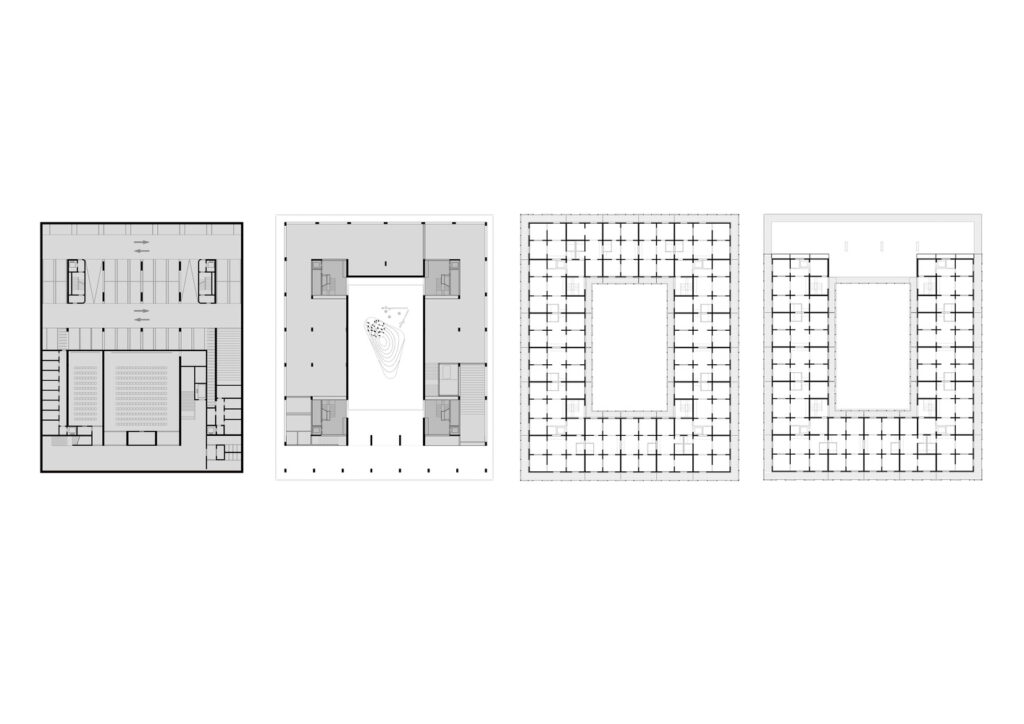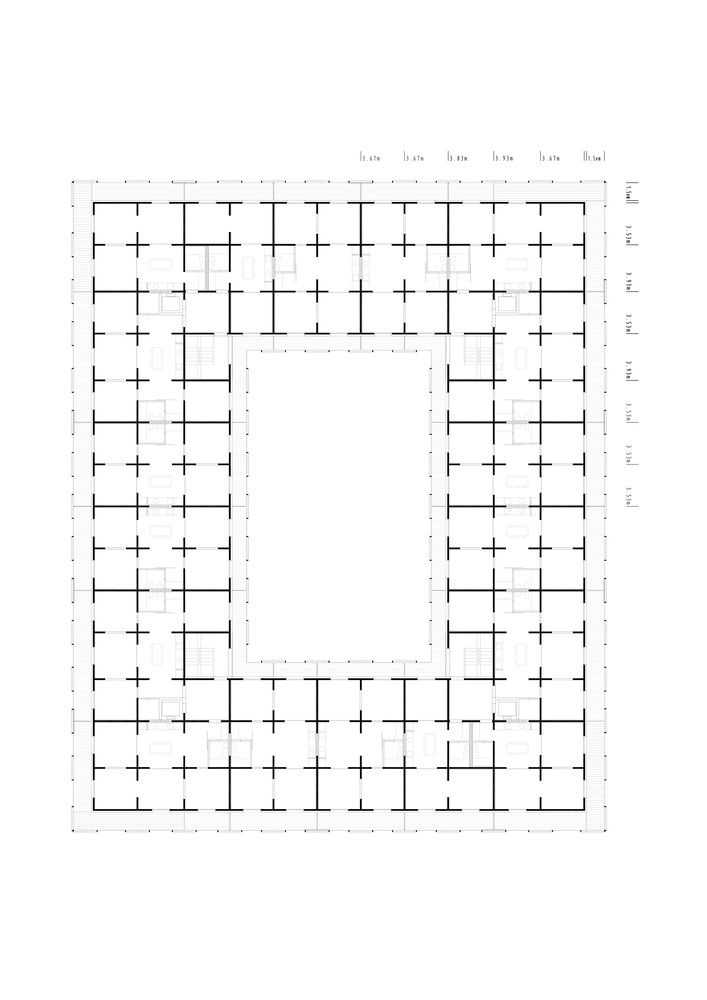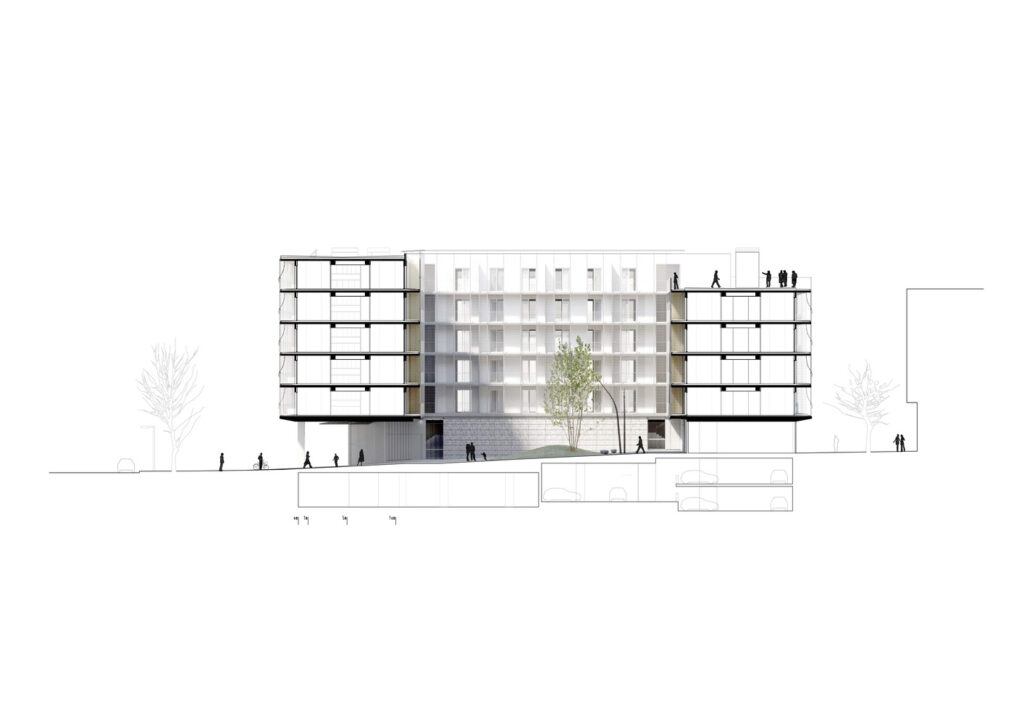Housing for all is undoubtedly one of most pressing issues affecting the cities of Europe. The project created by this pair of architects, BigMat Finalist Prize in Spain’21, is a possible answer to the following questions: How will we be living in the near future? What typologies of living will exist? What style of construction?

The building is organized around a courtyard that links a sequence of intermediate spaces. On the ground floor, a portico open to the city anticipates the doorway of the building and filters the relationship between public space and the communal courtyard that acts as a small plaza for the community. Instead of entering each of the building’s hallways directly and independently from the outer façade, the four communication shafts are located in the four corners of the courtyard, so that all the inhabitants come together and meet in the courtyard plaza.
Vivienda Sociales in Cornellà de Llobregat, by Peris + Toral Architectes
BigMat Finalist Prize in Spain’21
Architects: Marta Peris, José Toral
Structural consultant: Bernúz Fernández
Mechanical: L3J Tècnics Associats
Site manager: Joan March i Raurell
Sustainability: Societat Orgànica
Acoustics: Àurea Acústica
Location: Avenida de la República Argentina, 21
Client: IMPSOL, lnstituto Metropolitano de Promoción de Suelo
Surface: 12.815,55 m2
On the typical floor, access to the dwellings is via the private terraces that make up the ring of outdoor spaces overlooking the courtyard. The building’s general floor plan is organized by means of a layout of communicating rooms. There are 114 spaces per floor, 543 in the building, of similar dimensions, that eliminate private and communal passageways to make full use of the surface area.
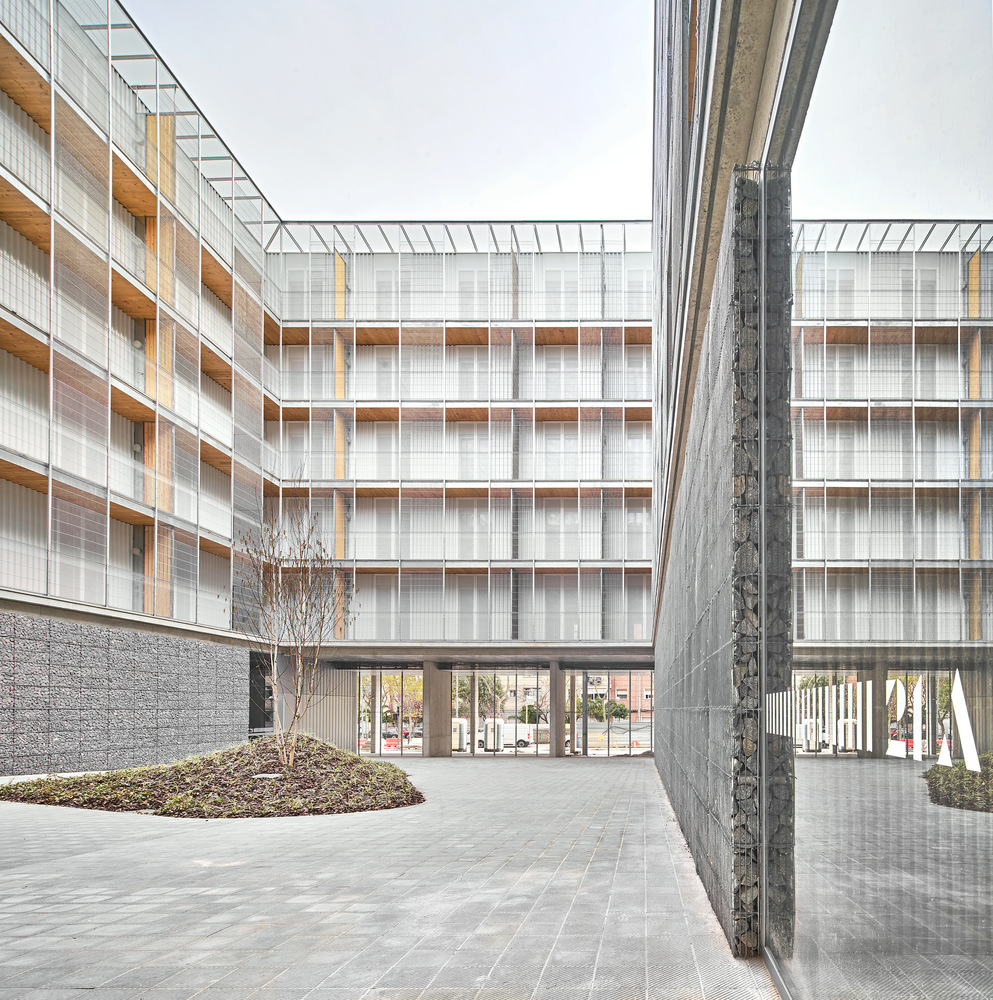

The server spaces are arranged in the central ring while the rest of the rooms, of undifferentiated uses and size, approximately 13 m2, run along the façade, presenting themselves to different forms of occupation. Another terrace in the outer ring completes the spatial sequence, the row of spaces interconnected by large openings, permeable to air, sight, and movement.
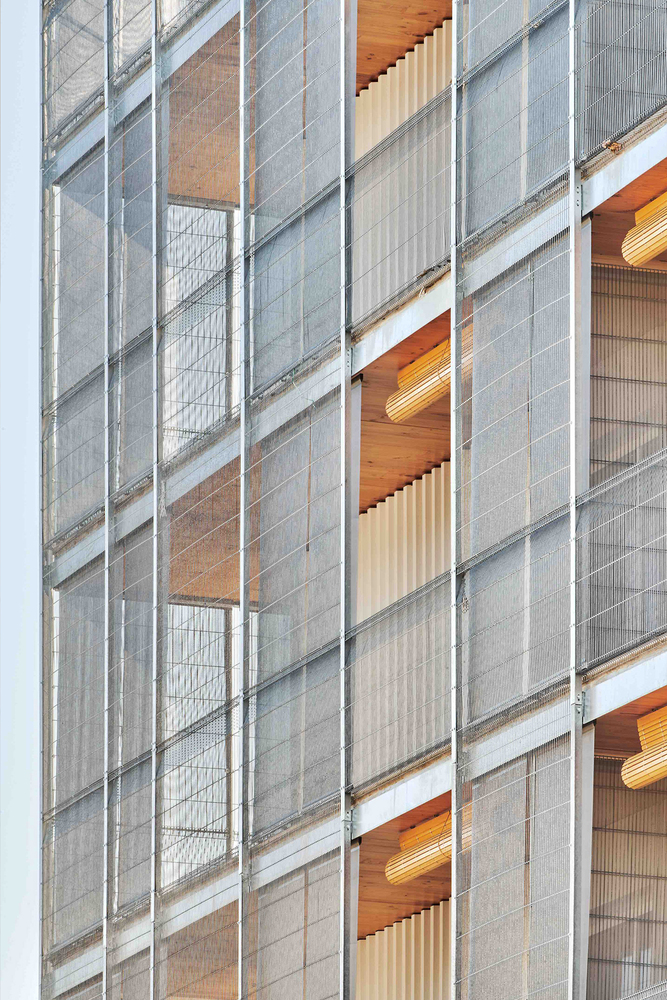
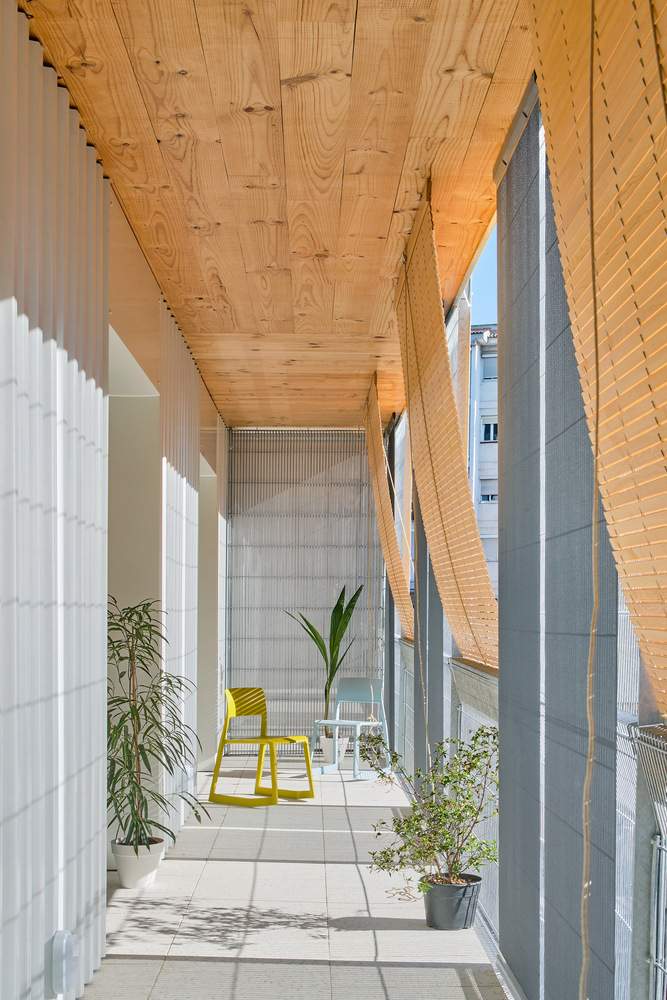
The 85 dwellings are distributed in four groupings, with a total of 18 units per floor. Four or five homes are laid out around each nucleus so that all typologies have cross ventilation and dual orientation.
The homes consist of five or six modules, depending on whether they have two or three bedrooms. The inclusive, open-plan kitchen is located in the central room, acting as a distributor that replaces passages, while making domestic work visible and avoiding fixed gender roles.

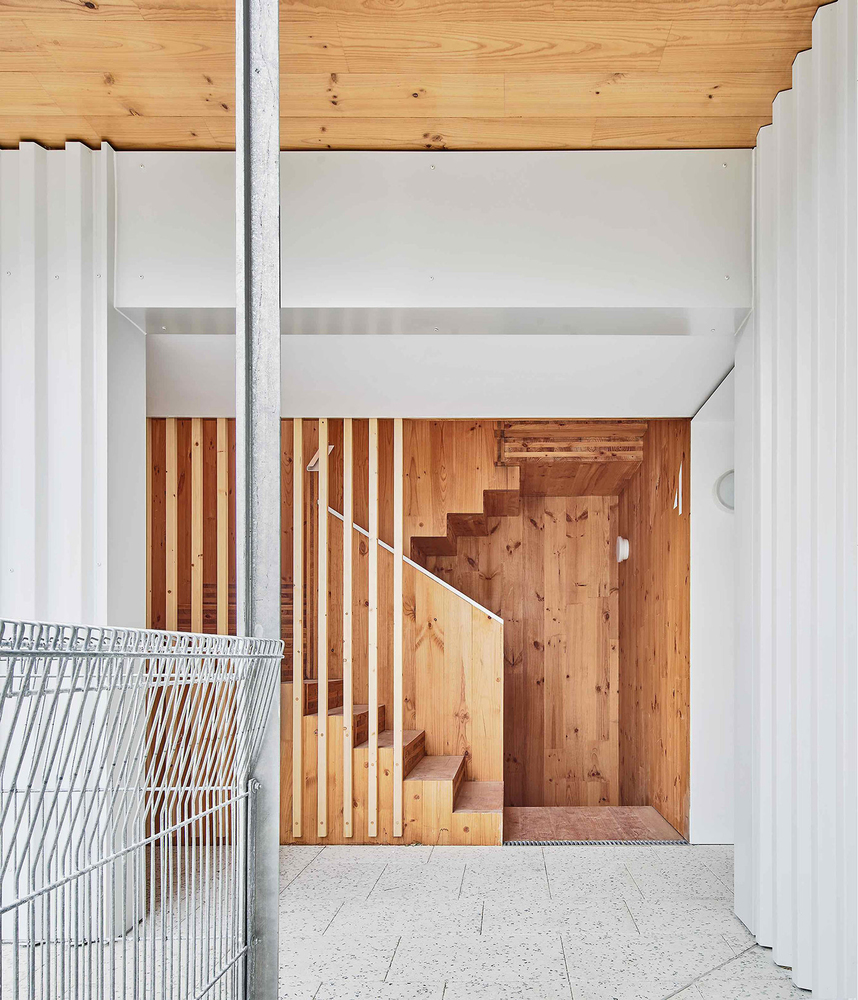
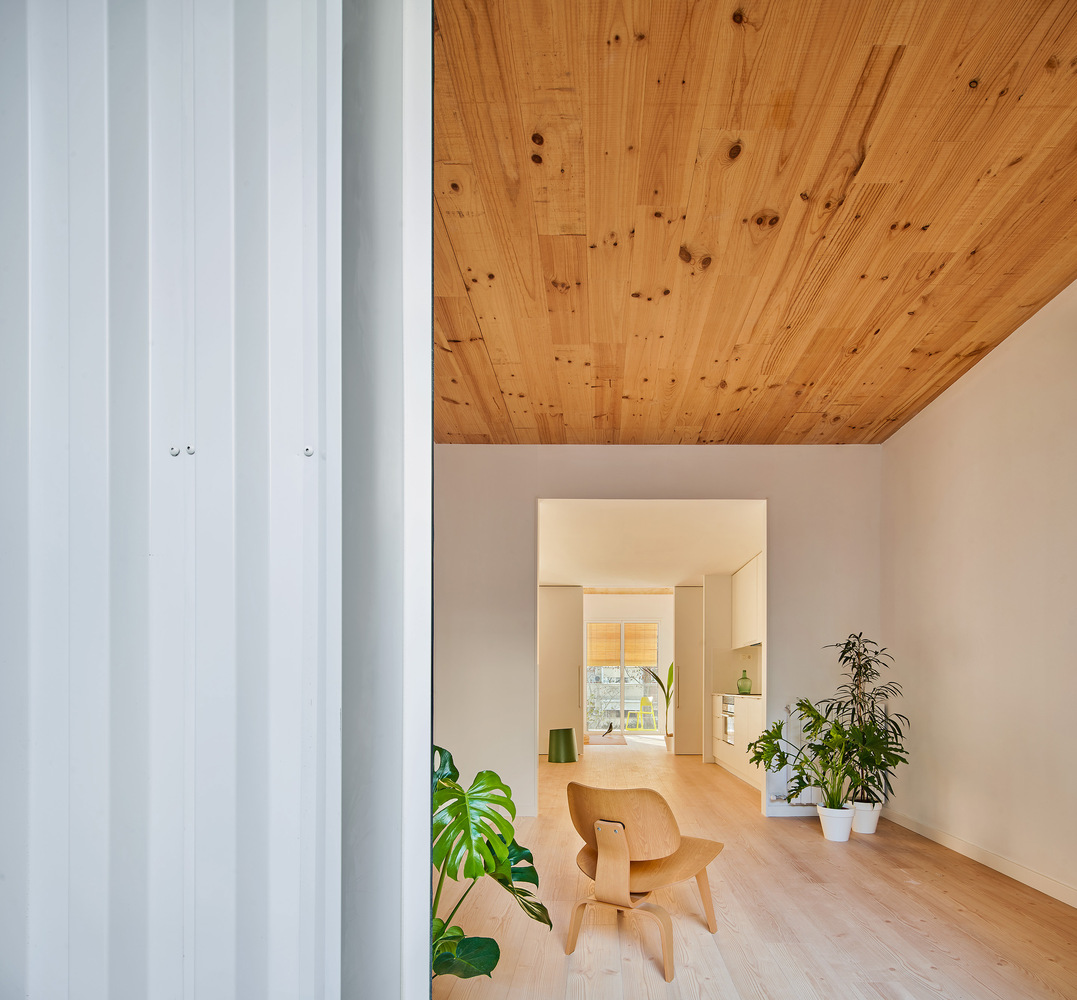
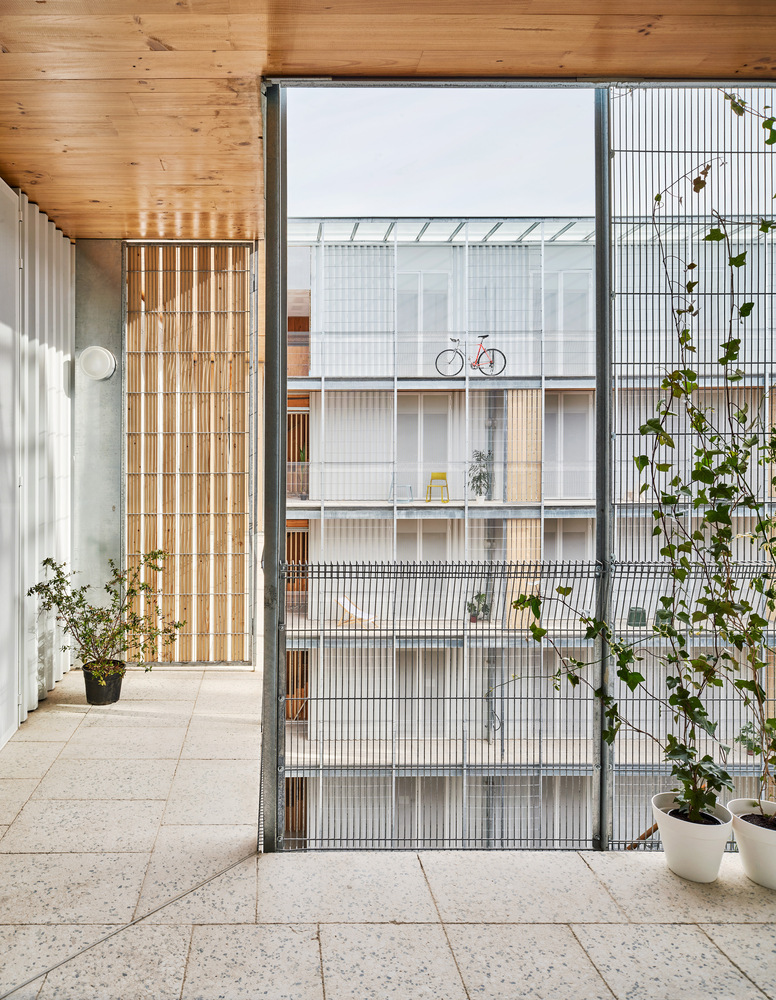
The size of the rooms, in addition to offering flexibility based on the ambiguity of use and functional indeterminacy, allows an optimal structural space for the wooden structure. As this is social housing, to ensure economic viability the volume of wood required has been optimized to 0.24 m3 per square meter of built area.
